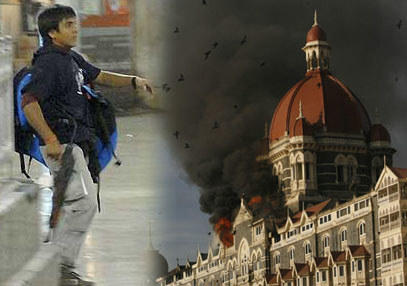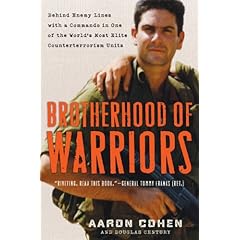The other day I read an interesting post over at Global Guerrillas called ‘open source jihad’. Open source is a concept borrowed by the computer and software development community with a philosophy derived by what Eric Raymond conceived in his essay ‘The Cathedral and the Bazaar’. (see below)
What John Robb was referring to specifically was Al Qaeda’s new open source jihad magazine called Inspire. It is kind of a comical magazine, but it is also a symbol of what open source warfare looks like in today’s modern world. It is a magazine designed to give jihadists throughout the world the ideas necessary to successfully attack and defeat infidels. The magazine has no license over the ideas, and hands these ideas out to anyone who wants them. That is the power of the idea exchange, and the intent is for people to take those ideas and do something with them.
Now this is where my ideas come into the picture. John Robb continues to promote what today’s enemies of the world can and will do with this concept of open source warfare. But to me, I would like to present what today’s ‘good guys’ can do with open source warfare. Call it ‘open source counter-terrorism’, or whatever you want to call it–because that is the point, you can call it whatever you want to call it. lol All you have to remember is that this is a strategy of ‘mimicry’. (taking your enemy’s strategy, and adding something to it to give you the edge)
With that said, what would open source counter-terrorism look like? Simply stated, read Feral Jundi and that is open source counter-terrorism. My target audience is security and military professionals, as well as the public, and my message has always been that of countering today’s enemies with new and interesting strategies and ideas. From destroying the cartels, to counter-piracy off the coast of Somalia, to defeating the Taliban and Al Qaeda at their game. This blog is an open source warfare publication for those that care about the fight. This Inspire magazine is the enemy’s equivalent.
I would also classify other blogs and forums/message boards I follow as a form of open source counter-terrorism or open source warfare. We all locate the stories that would be interesting to our peers, we present them to the community, and we discuss. Folks come up with strategies and ideas in their brain about how to counter a specific threat, or what equipment to buy, or how to set up their weapon, etc. Hell, I originally learned about contracting by visiting a forum called Tactical Forums, and I would classify that as ‘open source contract job search’. lol Because in the beginning, there were no books or schools to teach you how to contract. You had to learn from numerous online sources and build off of other contractor’s strategies for the job search and working in the industry.
But what is missing in the whole open source counter-terrorism game is more of a focus on the public at large. To me, the jihadist fears a public that is armed with the knowledge necessary to defeat them. The jihadist, pirate, cartel, or whomever all depend on the idea that civilians do not have the mental or emotional fortitude to defeat them. That terrorism will always reign supreme. Pfffft. I would like to change that.
To be realistic though, I don’t expect grandma to pick up an M-240 and mow down terrorists. But I do think grandma can do things that can throw a serious wrench into the Usama or Zetas terror machine. Grandma can pick up a phone, she can identify scenarios that would be of concern, she can identify persons, she can film/tweet/text via smart phone all sorts of stuff that would be interesting to the sheep dogs. There are tons of things grandma can do within her power. She also has a brain, and can logically think out strategies and tactics, or provide a missing piece of information that no one else thought up. She has value and an empowered grandma can certainly be a counter to the empowered jihadist.
Another concept that was brought up on my Face Book page by some readers was developing games to help educate the public on how to fight these folks. Massive multiplayer games on Facebook, or spectacular video games like Modern Warfare are examples of the kind of games that get incredible reach. They also present scenarios for players to strategize and out think enemies. Just the kind of thing to fuel open source counter-terrorism. The TV show called Surviving Disaster is another example of empowering civilians to survive and even stop terrorism. Entertainment is an excellent way of getting the ideas out there.
On a side note, one other area of open source warfare that I keep introducing and hoping others will build off of is the concept of Letter of Marque and Reprisal. It is an old system of licensing that provided structure and a legal mechanism for the state and private industry partnership during times of war. I think it can be an effective system if given some modern upgrades.
The number one theme of open source counter-terrorism though is to promote the concept that counter-terror is not just for police or military. It is a concept that gets the civilian population involved with counter-terror, both directly and indirectly. Directly– meaning armed with knowledge to defeat these folks or disrupt their operations, and indirectly by discussing, developing and sharing new strategies and ideas, or building off of current strategies and ideas via blogs and forums, that can help police/military/public to defeat these enemies. A big hat tip to John Robb and his ideas, and to my readers over the years for fueling the great open source counter-terror game here on this blog. –Matt
——————————————————————
Glenn ReynoldsJohn Robb’s chilling brief on postmodern terrorism23 May 2007
Brave New War: The Next Stage of Terrorism and the End of Globalization, by John Robb
Last year, I wrote a book called An Army of Davids: How Markets and Technology Empower Ordinary People to Beat Big Government, Big Media, and Other Goliaths. It was a celebration of how technology empowers the little guy, though I did spend some time discussing the darker sides of this development. John Robb’s Brave New War is in a way the mirror image of my argument: it devotes a lot of space to the dark side of the technological empowerment of individuals and small groups, and much less to potential upsides.
The dark side is certainly there. In the old days, you needed many people to commit significant mayhem—something like a Roman legion, or at least a century. Nowadays, one man with an AK-47 is probably a match for a hundred Roman legionaries, and modern explosives make matters even more asymmetrical. In the foreseeable future, Robb concludes, we may even see a situation where an individual can declare war on the world—and win. Or as science fiction writer Vernor Vinge put it in his recent book Rainbows End, set in 2025: “Nowadays Grand Terror technology was so cheap that cults and criminal gangs could acquire it . . . . In all innocence, the marvelous creativity of humankind continued to generate unintended consequences. There were a dozen research trends that could ultimately put world-killer weapons in the hands of anyone having a bad hair day.”

